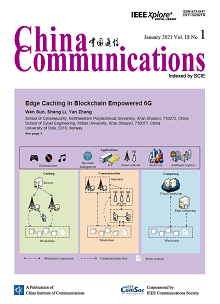SIGNAL PROCESSING
Ghaffar Raeisi, Mohammad Gholami
2021, 18(1): 181-195.
In this paper, a new type of edge coloring of graphs together with an algorithm for such an edge coloring is presented to construct some column-weight three low-density parity-check (LDPC) codes whose Tanner graphs are free of 4-cycles. This kind of edge coloring is applied on some well-known classes of graphs such as complete graphs and complete bipartite graphs to generate some column-weight 3 LDPC codes having flexibility in terms of code length and rate. Interestingly, the constructed (3,k)-regular codes with regularities k=4,5,…, 22 have lengths n=12, 20, 26, 35, 48, 57, 70, 88, 104, 117, 140, 155, 76, 204, 228, 247, 280, 301, 330, having minimum block length compared to the best known similar codes in the literature. In addition to linear complexity of generating such parity-check matrices, they can be considered as the base matrices of some quasi-cyclic (QC) LDPC codes with maximum achievable girth 18, which inherit the low-complexity encoder implementations of QC-LDPC codes. Simulation results show that the QC-LDPC codes with large girth lifted from the constructed base matrices have good performances and outperform random codes, progressive edge growth LDPC codes, some finite fields and group rings based QC-LDPC codes and also have a close competition to the standard IEEE 802. 16e (WiMAX) code.
